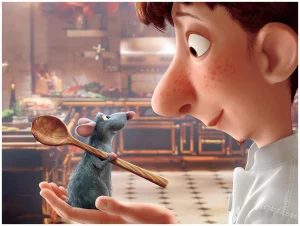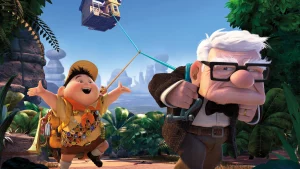Introduction
Animation has come a long way with new technologies making it easier and faster to create. One of the most important technologies in recent years is Artificial Intelligence (AI). AI is helping animators in many ways, making their work faster, more creative, and less expensive. In this article, we will explore how AI is changing the way animations are made and what it means for the future of the industry.
What is AI Animation Production?

AI animation production refers to the use of artificial intelligence in making animations. AI tools help animators with tasks such as designing characters, creating movements, rendering images, and even writing scripts. These AI tools can perform repetitive and time-consuming tasks, allowing animators to focus more on creative aspects of their work.
Some common ways AI is used in animation include:
- Creating in-between frames: AI can generate frames between the keyframes, which saves animators a lot of time.
- Motion capture: AI helps apply movements to characters, making them look more realistic.
- Facial animations: AI tools help create realistic facial expressions for characters.
- Improving visuals: AI can enhance details, textures, and lighting, making the animation look better.
AI is making animation production faster and easier, helping studios complete projects in less time.
Benefits of AI in Animation Production

AI is bringing many benefits to animation studios, improving efficiency, reducing costs, and making the creative process easier. Some of the key benefits include:
1. Faster Production
AI speeds up the animation process by automating tasks like creating in-between frames or cleaning up lines. This helps studios complete projects faster, leaving more time for animators to focus on the creative side of the work.
2. Better Quality
AI can improve the quality of animations by enhancing visual details such as lighting, shadows, and textures. It can also create smoother character movements, making animations more realistic.
3. Lower Costs
Since AI can do many tasks that would normally require a lot of manual work, it helps reduce costs. This makes animation more affordable, especially for smaller studios and independent filmmakers.
4. More Creative Freedom
With AI handling routine tasks, animators have more time to focus on the creative aspects of their work. They can experiment with new ideas, styles, and techniques without worrying about time-consuming tasks.
AI Helps Speed Up Animation
AI makes animation faster by automating repetitive tasks. For example, instead of drawing each frame by hand, AI can create multiple frames based on the animator’s design. This reduces the time it takes to create an animation. Tasks like coloring backgrounds or creating movement patterns can be done by AI, allowing animators to focus on more detailed parts of the animation. This speed allows studios to complete projects more quickly and take on more work in less time.
AI in Character Design and Development

Creating characters is one of the most important parts of animation, and AI helps in this area too. AI tools can help generate character designs based on certain characteristics or traits, like age, personality, or even style. This makes it easier for animators to explore different looks and concepts quickly. AI can also assist in designing characters that are unique and appealing, based on data and trends in the animation world. The result is a more efficient process for character creation, saving both time and effort.
AI Assists with Voice and Sound Integration
AI is also helping to integrate sound and voice into animations. It can automatically sync voiceovers with the movement of animated characters, making the process smoother and quicker. By analyzing the character’s movements and expressions, AI can predict the best time for specific voice lines to be played. This helps animators avoid long hours of trial and error. AI can even suggest sound effects that match the mood or action in a scene, further improving the overall quality of the animation.
AI Helps with Storytelling

While AI may not create complex storylines, it can still assist in the storytelling process. By analyzing past successful animations, AI can suggest narrative structures or plot twists that might work well. It can also offer suggestions on how to develop characters or plot points that will engage viewers. This data-driven approach helps animators make better creative decisions and improves the chances of success for the final animation. Although AI doesn’t replace the storyteller, it can help guide the creative process with valuable insights.
Cost Savings in Animation Production
Producing animations can be expensive, especially when a large team is needed for tasks like drawing, coloring, and editing. By using AI, studios can lower their costs. AI tools can handle many of these tasks automatically, meaning fewer animators are needed for these parts of the process. This allows the studio to save on labor costs and allocate resources to more important areas of production, such as the story or special effects. Lower costs also make it easier for smaller studios or independent animators to create high-quality animations without breaking the bank.
AI in Animation for Special Effects

AI is also playing a big role in creating special effects in animation. Special effects, like explosions, magic, or weather changes, can take a lot of time to design and animate. With AI, studios can automate these effects, making them quicker and more realistic. For example, AI can create lifelike rain or fire by studying real-world data, which helps animators add more details to their scenes. This saves time and effort, and it makes the animation look more polished and professional.
AI Enhances Animation Quality
One of the main advantages of using AI in animation is the ability to improve the overall quality of the animation. AI can help smooth out movements and make transitions between frames look more natural. It can even detect errors in the animation, like a character’s arm moving in an unnatural way, and automatically correct it. This means that the final product is more polished and professional, with fewer mistakes that need to be fixed manually. This higher quality of work helps to create better experiences for the audience.
AI and Global Collaboration

In today’s world, animation studios are often spread across different countries. AI helps make collaboration between teams easier. It can translate scripts, analyze animation styles from different cultures, and offer suggestions that match different audiences’ preferences. AI can also manage tasks and deadlines for teams working in different time zones. This makes it easier for animation studios to work together on global projects, bringing in fresh ideas from all over the world while keeping everything organized.
AI Helps with Animation Marketing
AI is not only useful during production, but it can also play a role in marketing animated films or series. AI tools can analyze social media and audience feedback to predict what kind of animation people will like. It can also help create customized advertisements or trailers by using AI to track which scenes from the animation have the most engagement. This makes marketing more efficient and targeted, helping the animation reach the right audience more easily.
Challenges of AI in Animation Production

Although AI brings many benefits, there are also some challenges. These include:
1. Data Dependence
AI tools need large amounts of data to work well. For animation, this means that AI systems need access to high-quality motion capture data and character models. Gathering this data can take time and be expensive.
2. Job Concerns
As AI handles more tasks, some animators may worry about losing their jobs. While AI can make production faster, it might reduce the need for animators to do certain tasks, especially for junior positions.
3. Ethical Issues
As AI becomes more advanced in animation, there are questions about who owns the work created by AI. For example, if an AI tool designs a character, who owns the rights to that design? These ethical issues are still being discussed in the industry.
The Future of AI in Animation Production

The future of AI in animation production is exciting. As AI technology continues to improve, it will play an even bigger role in creating animations. Here are some possibilities for the future:
1. Complete Automation
In the future, AI could automate the entire animation process, from start to finish. This would make production even faster, though it may raise concerns about job loss in the industry.
2. AI-Generated Storytelling
AI could help create stories and scripts. By analyzing existing stories, AI could suggest new plot twists or character ideas, making the creative process easier for writers.
3. Personalized Animations
In the future, AI might allow animations to be customized for individual viewers. For example, AI could change the storyline or visual style based on the viewer’s preferences.
AI in Animation: A Comparison with Traditional Methods
To understand the difference between AI-assisted animation and traditional animation, let’s compare the two. The table below highlights the key differences between the two approaches.
| Aspect | Traditional Animation | AI-Assisted Animation |
|---|---|---|
| Time to Complete | Takes a long time, many manual steps | Faster production with AI automating tasks |
| Labor Intensity | Needs many animators | Fewer animators needed due to automation |
| Cost | Expensive due to time and manual work | Lower costs due to faster production |
| Quality Control | High-quality work, but slower process | AI tools help maintain quality and speed |
| Creative Freedom | Limited by the time and resources available | More time for creative experimentation |
| Data Requirements | Little data needed | Needs large amounts of data to train AI |
Key Comparison Table: Traditional vs. AI-Assisted Animation
| Feature | Traditional Animation | AI-Assisted Animation |
|---|---|---|
| Time Efficiency | Slow, requires a lot of manual work | Faster production with AI tools |
| Labor Involvement | High involvement of animators | Less involvement due to automation |
| Cost Efficiency | High costs due to labor and time | Lower costs thanks to AI automation |
| Creative Potential | Limited by available time and resources | More creative freedom with faster production |
| Visual Consistency | Dependent on individual animators | More consistent results using AI tools |
Conclusion
AI is changing the animation industry by making the production process faster, cheaper, and more creative. While there are some challenges, the benefits of AI far outweigh the drawbacks. As AI continues to improve, it will offer even more exciting possibilities for the future of animation. Whether it’s automating tasks, enhancing creativity, or improving quality, AI will continue to play a crucial role in shaping the future of animation production.











